Two of the most popular cartridges for everyday carry weapons are the 38 Special and the 9mm Luger. Is there a conclusive winner in the 38 Special vs 9mm debate? Or do they each offer distinct advantages? The fact that they are both so popular would suggest the latter case is case.
Too many articles like these get bogged down with long-winded histories of the cartridges they compare. We’re going to assume you’re not particularly interested in how the Spanish-American War led to the development of the 38 Spl. You probably don’t care what color socks Georg Luger liked to wear, either. You want to know what kind of ammo you should chamber for self-defense. So, we’re going to compare the ballistic performance, stopping power, recoil and other attributes of the 38 Spl and the 9mm.
38 Special vs. 9mm
Revolver vs. Semi-Automatic
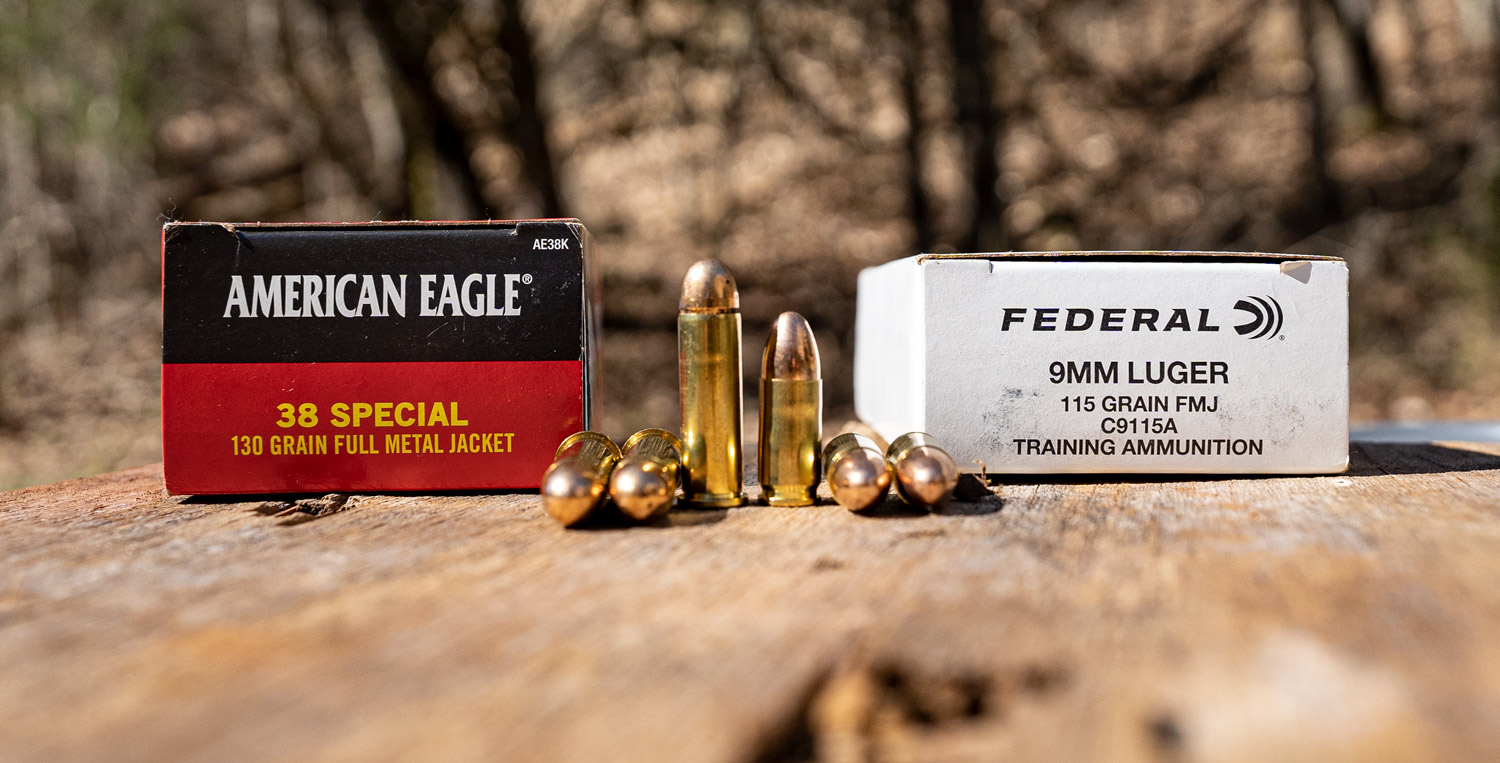
It wouldn’t be fair to compare the 38 Spl and the 9mm without first noting that they’re designed for very different handguns.
The 38 Spl is a rimmed cartridge, while 9mm is rimless. A round’s case has a rim to make certain it chambers correctly in a revolver’s cylinder. There are some semi-auto weapons designed for rimmed cartridges, although they aren’t considered terribly reliable. There are likewise revolvers chambered for rimless cartridges, but for the most part rounds like 9mm, 40 S&W and 45 ACP are meant for semi-automatic weapons.
Whether you should prefer the 38 Spl or 9mm boils down nearly entirely to whether you want to carry a revolver or a semi-auto. Snub-nosed revolvers chambered for 38 Spl are massively popular because they are so lightweight yet still pack a lot of punch. The key advantage revolvers offer is their exceptional reliability. They have very few moving parts. They are virtually unable to jam. If a cartridge fails to fire, you just pull the trigger to move on to the next one. That’s the kind of peace of mind many people demand from their carry weapons.
A well-maintained semi-auto can still be extremely reliable, of course. They can also be very lightweight, such as the Glock 43 which weighs only 17.95 ounces when empty. Even that very small handgun has a 6-round magazine, which is one round more than a 38 Spl snub-nose like the S&W Model 642. Semi-autos tend to be easier to reload as well. Although, you shouldn’t overlook the convenience of a moon clip or speed loader if you ever need to quickly reload a revolver.
We could go on and on when we really only want to make the point we’ve already raised. We advise you pick 38 Special if you want to carry a revolver. If you’re committed to semi-auto pistols, pick 9mm.
Cartridge Dimensions
| 38 Special | 9mm | |
|---|---|---|
| Parent case | 38 Long Colt | 7.65x21 |
| Case type | Rimmed, straight | Rimless, tapered |
| Bullet diameter | 0.357 in | 0.355 in |
| Neck diameter | 0.379 in | 0.380 in |
| Base diameter | 0.379 in | 0.391 in |
| Rim diameter | 0.440 in | 0.392 in |
| Rim thickness | 0.058 in | 0.050 in |
| Case length | 1.155 in | 0.754 in |
| Overall length | 1.550 in | 1.169 in |
| Case capacity | 23.4 gr H2O | 13.30 gr H2O |
| Maximum pressure | 17,500 psi | 35,000 psi |
We can note a few important things when we compare these two rounds’ dimensions. First off, their bullet diameters are nearly identical. This could make their ballistic and terminal performance similar to some degree, but 38 Special ammo and 9mm by no means share the same bullet. A 38 Spl bullet typically weighs between 110 and 158 grains, while a 9mm bullet nearly always weighs 115, 124 or 147 grains. (For reference, there are 437.5 grains in an ounce.)
More importantly, the 38 Spl is about 50 percent longer than the 9mm. Its case accordingly has nearly double the capacity for propellant. In spite of this, the 38 Spl generally doesn’t contain significantly more propellant, and the maximum pressure it’s loaded to is only half that of the 9mm. Here we see the interesting phenomenon where a cartridge is bigger but not necessarily more powerful!
38 Special vs. 9mm Ballistics
| 38 Spl - Prvi - 158gr LRN (7.7" barrel) | 9mm - Prvi 124gr LRN (4" barrel) | |
|---|---|---|
| Muzzle velocity (fps) | 902 | 1132 |
| Velocity @ 25 yds | 879 | 1077 |
| Velocity @ 50 yds | 857 | 1032 |
| Velocity @ 75 yds | 837 | 994 |
| Velocity @ 100 yds | 818 | 961 |
| G1 ballistic coefficient | 0.15 | 0.145 |
| Drop @ 25 yds | 1.43 | 0.95 |
| Drop @ 50 yds | 0.02 | 0.02 |
| Drop @ 75 yds | -4.34 | -2.96 |
| Drop @ 100 yds | -11.81 | -8.13 |
| Muzzle energy (ft lbs) | 285 | 353 |
| Energy @ 25 yds | 271 | 320 |
| Energy @ 50 yds | 258 | 293 |
| Energy @ 75 yds | 246 | 272 |
| Energy @ 100 yds | 235 | 255 |
| 38 Spl - Hornady Critical Defense 110gr FTX (4" barrel) | 9mm - Hornady Critical Defense 115gr FTX (4" barrel) | |
| Muzzle velocity (fps) | 1010 | 1135 |
| Velocity @ 25 yds | 971 | 1074 |
| Velocity @ 50 yds | 938 | 1024 |
| Velocity @ 75 yds | 909 | 983 |
| Velocity @ 100 yds | 882 | 948 |
| G1 ballistic coefficient | 0.131 | 0.129 |
| Drop @ 25 yds | 1.17 | 0.95 |
| Drop @ 50 yds | 0.02 | 0.01 |
| Drop @ 75 yds | -3.6 | -3 |
| Drop @ 100 yds | -9.85 | -8.26 |
| Muzzle energy (ft lbs) | 249 | 329 |
| Energy @ 25 yds | 231 | 294 |
| Energy @ 50 yds | 215 | 268 |
| Energy @ 75 yds | 202 | 247 |
| Energy @ 100 yds | 190 | 230 |
| 38 Spl - Remington UMC 130 FMJ | 9mm Remington UMC 147 FMJ | |
| Muzzle velocity (fps) | 800 | 990 |
| Velocity @ 25 yds | 787 | 964 |
| Velocity @ 50 yds | 775 | 940 |
| Velocity @ 75 yds | 763 | 918 |
| Velocity @ 100 yds | 752 | 898 |
| G1 ballistic coefficient | 0.213 | 0.182 |
| Drop @ 25 yds | 1.78 | 1.18 |
| Drop @ 50 yds | 0.02 | 0.02 |
| Drop @ 75 yds | -5.34 | -3.61 |
| Drop @ 100 yds | -14.44 | -9.82 |
| Muzzle energy (ft lbs) | 185 | 320 |
| Energy @ 25 yds | 179 | 303 |
| Energy @ 50 yds | 174 | 289 |
| Energy @ 75 yds | 168 | 275 |
| Energy @ 100 yds | 163 | 263 |
Comparing these two rounds’ ballistic performance is a difficult task. A 38 Spl +P round fired in a rifle, for example, will behave incomparably to a subsonic 9mm round fired in a subcompact handgun.
That said, direct your attention to the comparison of the two Hornady loads. These are fairly analogous to one another and both have ballistic data collected from the same length test barrel. You would ideally have the same test barrel length, because then either round’s propellant gasses have roughly the same amount of time to transfer their energy to their bullets.
Right away the 9mm’s in-flight ballistics look a little nicer. It delivers a higher muzzle velocity and in effect a flatter trajectory. The two rounds’ ballistic coefficients (which measures their ability to overcome air resistance in flight, where a higher number is better) are virtually identical, which means they ought to decline in velocity at a similar rate and offer interchangeable resistance to wind deflection.
In practice you would find either round more than accurate enough over the distances you’re likely to fire them over. Sure, people do hunt varmint with the 38 Spl and 9mm at long range. However, both are perfectly serviceable for covering the short distances that self-defense scenarios are likely to play out within.
Stopping Power

We must preface by saying energy isn’t the only thing that matters when it comes to stopping power. Sectional density (i.e. the ability to penetrate) and terminal ballistics count for a whole lot as well. But muzzle energy is most important, and the 9mm is certainly the better round when it comes to that.
The amount of energy a bullet can transfer to its target is determined solely by its mass and velocity. We’ll spare you the physics behind that claim, but you can clearly see why a 115 grain bullet traveling at 1,135 fps is going to outclass a lighter bullet that’s traveling more slowly. Even when a 38 Spl bullet is substantially heavier, its muzzle velocity becomes much less than even the heaviest 9mm bullet’s.
The very minimum amount of energy recommended for self-defense is 220 ft lbs. Really, 300 ft lbs or greater is what you want. In this regard the 9mm consistently delivers the minimum acceptable energy at any point throughout 100 yards, while the 38 Spl may dip beneath 220 ft lbs at half that distance. And when you consider that a snub-nosed revolver’s barrel may be less than 2” long, the amount of energy the 38 Spl is able to transfer throughout impact and penetration becomes even lower still.
Recoil
“Recoil” is the twenty-five cent word for “kick.” You would ideally have zero recoil when you fire a weapon, because then your barrel wouldn’t move and your sights would remain right where you left them when you pulled the trigger. But all guns have recoil – at least they will until we stop using lasers for nonsense like corrective eye surgery.
So which round has less recoil? That’s hard to say, because the amount of recoil you’ll actually experience firing either is bound to be subjective. We can measure recoil energy in foot-pound force to give you some objective comparison, though. Recoil energy is determined by bullet weight, propellant weight, firearm weight and muzzle velocity. For our purposes let’s assume all the rounds compared earlier have five grains of propellant, and we are firing a 1.59 lb 38 Spl Rock Island Armory M206 and a 1.55 lb 9mm Glock 17.
| Recoil Energy (ft lbs) | |
|---|---|
| 38 Special Prvi Partizan 158gr LRN | 5.6 |
| 38 Special Hornady Critical Defense 110gr FTX | 3.69 |
| 38 Special Remington UMC 130 FMJ | 3.32 |
| 9mm Prvi Partizan 124gr LRN | 5.6 |
| 9mm Hornady Critical Defense 115gr FTX | 4.95 |
| 9mm Remington UMC 147 FMJ | 5.95 |
Here we see the downside of the 9mm’s generally faster muzzle velocity – it tends to deliver more of that recoil which throws your aim off with every trigger pull. But it’s not very much to worry about. Neither the 9mm nor the 38 Spl generates an uncomfortable amount of recoil. We don’t find either difficult to fire rapidly and with great precision, either.
Price & Availability

As the much smaller cartridge, it’s only fair that the 9mm should cost as little as half as much as a 38 Spl. There’s simply less lead and copper in it, and its lighter weight means it costs less to ship as well. It’s not uncommon for 9mm ammo to run 20-30% less than 38 special.
The 9mm is also the most popular handgun cartridge in the world, so it’s necessarily easier to find as well. Not to say you’ll have to search high and low for 38 Spl, but you can expect slightly less variety.
We’re not sure where else to shoehorn this very small point in: The 38 Spl is also extremely useful for when you’d like to save money or enjoy less recoil while firing a 357 Magnum revolver. The Ruger Match Champion in the photo above is a 357 Magnum revolver we shoot 38 special out of. It is compatible with 357 Magnum firearms. But never, under any circumstances load 357 Magnum in a firearm chambered solely for 38 Spl. That’s a good way to lose a hand.
Takeaway
The 9mm is king for a reason. If it’s the only round you ever fire you will still benefit from a huge selection of firearms, stopping power that can effectively neutralize a threat up to 100 yards away (or farther), and stellar accuracy.
The 38 Special offers somewhat less stopping power than the 9mm. The snub-nosed revolvers frequently chambered for it only make its in-flight and terminal ballistics worse by comparison. Yet you could very well argue that those same snubbies’ tiny size and awesome reliability more than make up for their shortcomings.
In a perfect world you would carry both a 9mm and a 38 Spl. Some of us carry a full-size semi-auto to draw first, and a snubbie in an ankle holster for a backup. But if you had to pick a winner in the 38 Special vs. 9mm debate, then we’d recommend you entrust your personal safety to America’s number one pistol cartridge, the 9mm.

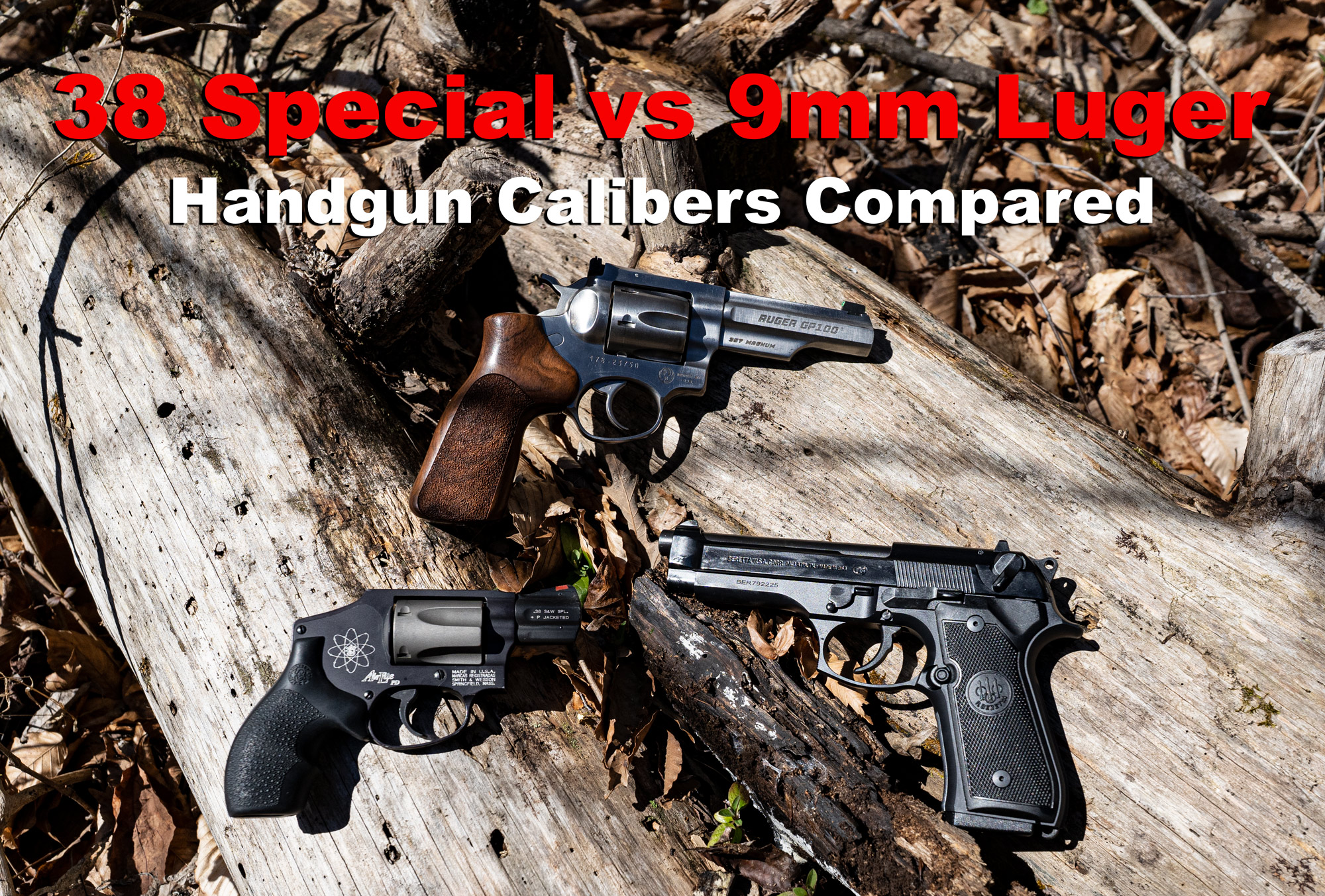
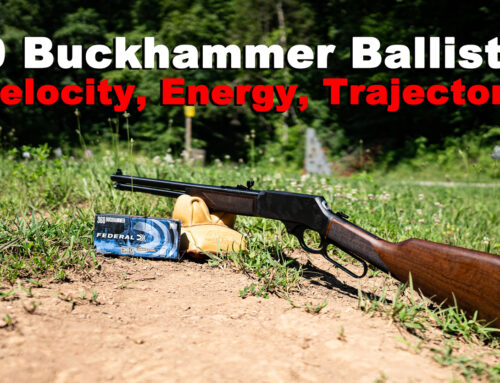
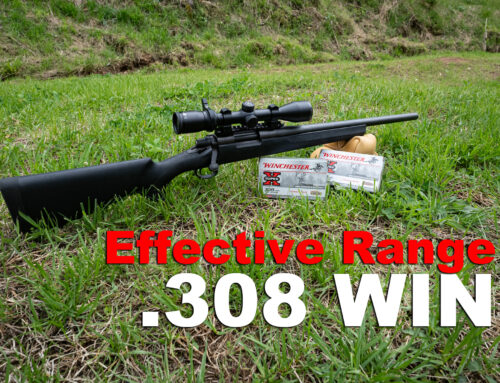
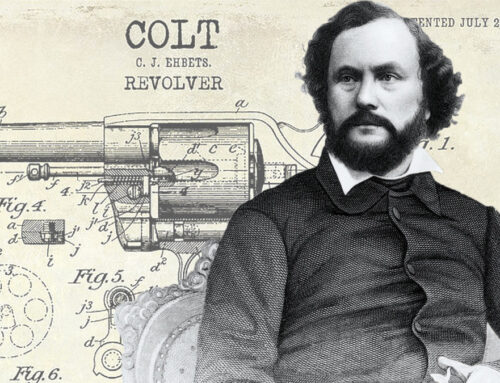
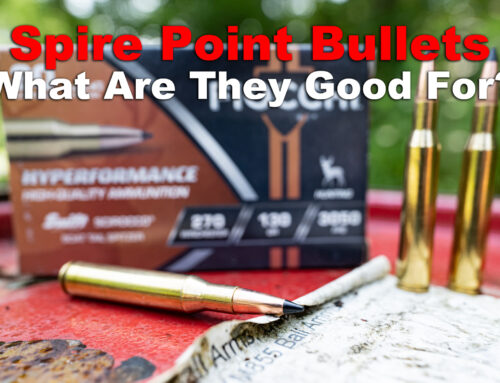
Although the 9mm produces a faster bullet, the impact of the slower heavier the .38 round in the self defense situation is substantial due to its weight, similar to the slow moving .45 ACP, it delivers sufficient shock/impact to a target within a 10 foot radius. Dependability of a revolver should never be ignored. As stated in your very accurate report, when a semi automatic gun misfires the correction action necessary can cost you your life, while the misfire of a revolver only requires a second pull of the trigger. Certainly, speed and energy generated by the round is not the whole game.
Most self defense situations occur 10 yards or less. 38 spl hollow point with good shot placement can do the job quite well. Lots of people knock the 38.
I’ve used both, (target Shooting, mainly), I will say that the I’ve seen the 115 grain FMJ .9mm round skip across wet surfaces. And the energy out of the muzzle was 306 lbs. As for the .38 SPL, I’ve used different loads, 110 grain +P from Hornady, (really like this round), to the 158 FMJ, and Hollow Point. The best FMJ round i’ve used was the 158 grain NORMA round, which produced 329 lbs of kenetic Energy out of the Muzzle. Well worth the price, So it surprises me when i see all the low Numbers of .38 SPL rounds on the market. Maybe folks need to buy better quality ammo? Recoil, is so light in my 4 inch wheel gun,(Metal), not a plastic wonder gun. You can always depend on a wheel gun, but i digress. By the way, Double Tap has some fine ammo, as well as underwood.